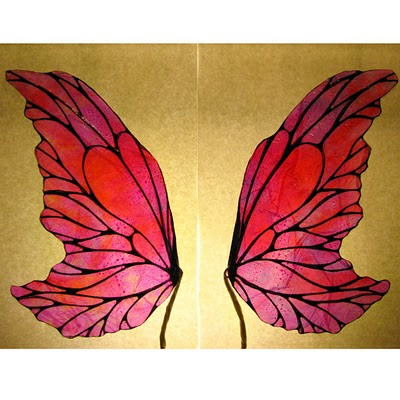

My favorite pair yet.

 I'm gearing up to hopefully sell many pairs of wings this Halloween season through my etsy shop TruWings. In other news I'm also in the process of updated my portfolio website.
I'm gearing up to hopefully sell many pairs of wings this Halloween season through my etsy shop TruWings. In other news I'm also in the process of updated my portfolio website.
 Yup, they just keep coming. More and More coming available soon.
Yup, they just keep coming. More and More coming available soon. 
 I've been making wings, so many wings. The first three pair posted to my etsy store, TruWings, last week have been sold and these two are now available. (They're on sale this week only though so they're going fast) I've about 7 more in the making though. Hopefully they will start showing up online next week.
I've been making wings, so many wings. The first three pair posted to my etsy store, TruWings, last week have been sold and these two are now available. (They're on sale this week only though so they're going fast) I've about 7 more in the making though. Hopefully they will start showing up online next week.

 Now this is more like it. I’ve figured out how to successfully blot the painted layers on the fairy wings – so long as I’m not going for detail. Turns out they look better when the paint is really wet and blurry since there is so much detailed being put into the veining instead.
Now this is more like it. I’ve figured out how to successfully blot the painted layers on the fairy wings – so long as I’m not going for detail. Turns out they look better when the paint is really wet and blurry since there is so much detailed being put into the veining instead.

Even this blot turned out to work just fine. I thought it was a failure; that there wasn’t enough alcohol in the wash and the colors were too harshly separated. But when I added a layer of veining over it everything came together.
I’ve also been finding that if I don’t plan anything out but just work freehand and do everything on the fly then, the pieces turn out much more interesting. This is true for both the paint wash layer and the veining.
 Experimental Fairy Wing Layers
Experimental Fairy Wing Layers


 Shoulder Socket
Shoulder Socket
Leo Marks as Cloten, and Mark Bedard as Posthumus with the Headless Body Prop
(Photo: Jay Westcott/TBD | Date: Feb. 02, 2011)
http://www.tbd.com/blogs/tbd-arts/2011/02/the-cymbeline-cast-has-a-pain-in-the-neck-8076.html
The most challenging and interesting prop I got to build for STC was the headless body of Cloton for our production of Shakespeare's "Cymbeline." This project was very involved and a lot of fun, drawing from a number of skills including puppetry, molding & casting, and soft goods. Once I got over feeling daunted by the task I dove right in.